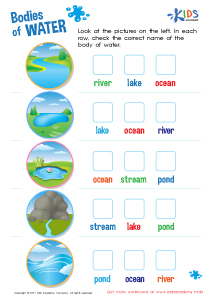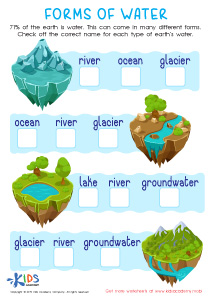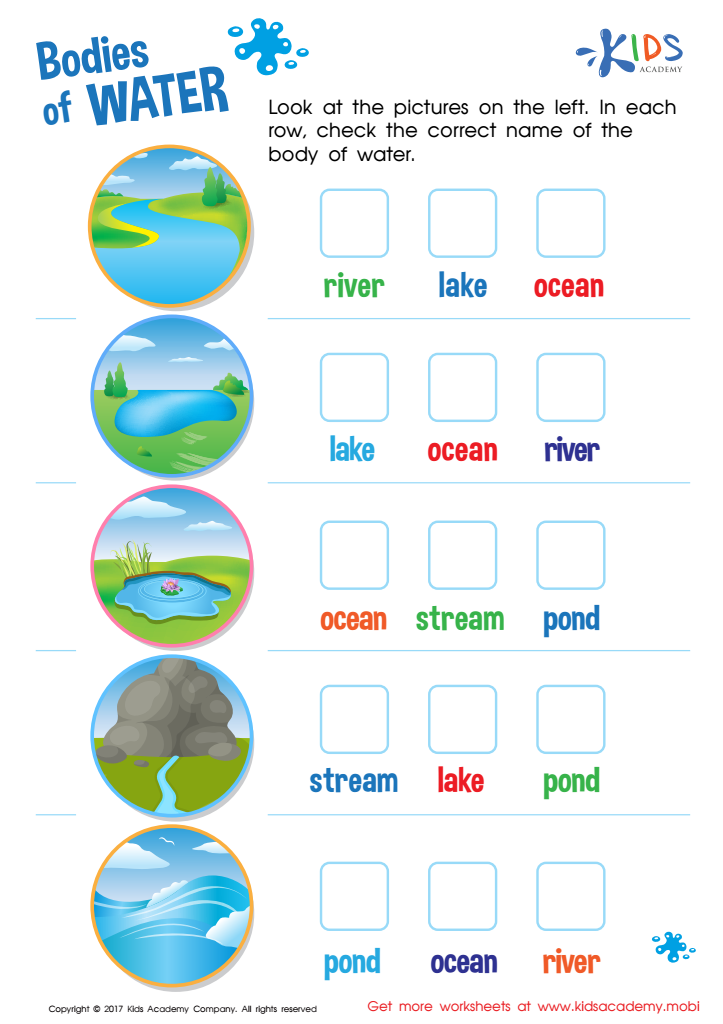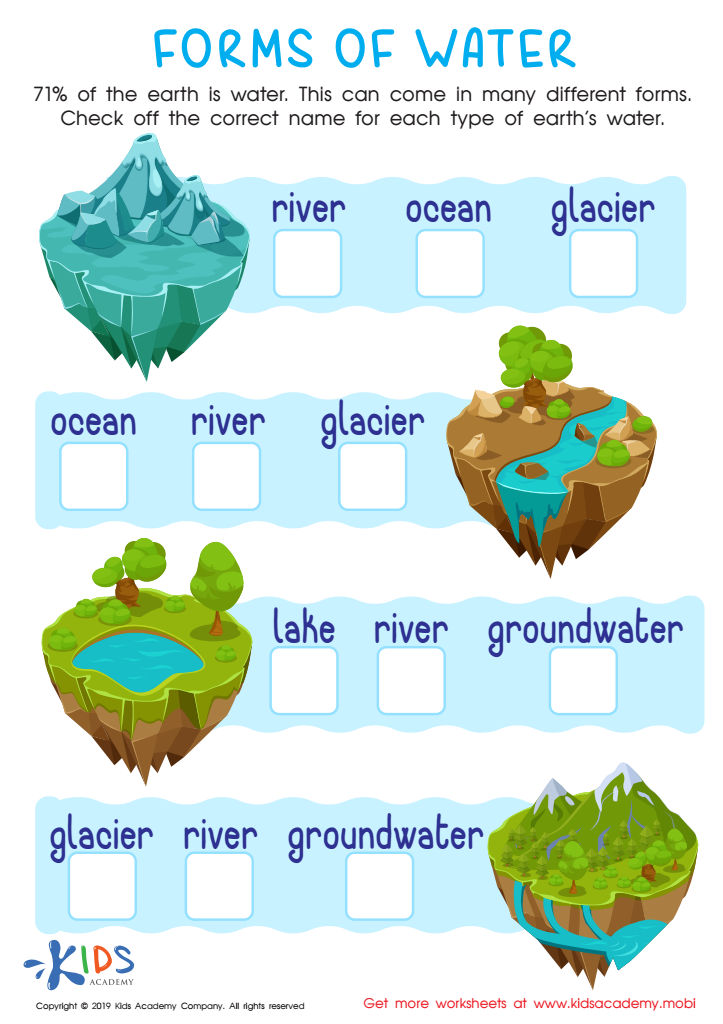Bodies of water - Lesson for Grade 2, Chapter - Changes
In the "Bodies of Water" lesson, designed for second-grade students within the "Changes" chapter of their Science unit, learners will embark on a fascinating exploration of the various forms and characteristics of water bodies that grace our planet. Through engaging activities such as the "Bodies of Water Worksheet" and the "Forms of Water Worksheet," students will familiarize themselves with rivers, lakes, oceans, and more, understanding not just their names but also their unique features and the roles they play in our environment.
Understanding bodies of water is crucial for several reasons. Firstly, it builds foundational knowledge about the Earth’s geography, helping students appreciate the natural world's diversity. Secondly, it introduces them to the concept of ecosystems and biodiversity, showing how bodies of water are vital habitats for many forms of life. Finally, learning about water bodies is a stepping stone to understanding broader environmental science concepts, including the water cycle and the importance of conserving water resources. This lesson aims to ignite curiosity about the natural world, fostering a sense of responsibility towards its preservation.


-
Activity 1 / Bodies of Water Worksheet
From the vast oceans, to the most modest of streams, our planet is made up of various types of waterways.
Teach your child to recognize the difference using this bodies of water worksheet PDF, which offers vivid illustrations to help your child see the difference without leaving the living room! -
Activity 2 / Forms of Water Worksheet
Water is a very important element of life. Without water, life forms would cease to exist in a very short while on Earth. Luckily for all of us, the Earth’s surface is a whopping 75% water. This means that there is plenty of water to go around. The water is of course in different forms such as rivers, oceans, and lakes. Ask your kids if they can give you some more examples of the forms of water. Then, look at this worksheet and help them check off the correct name for each type of water found on Earth.



